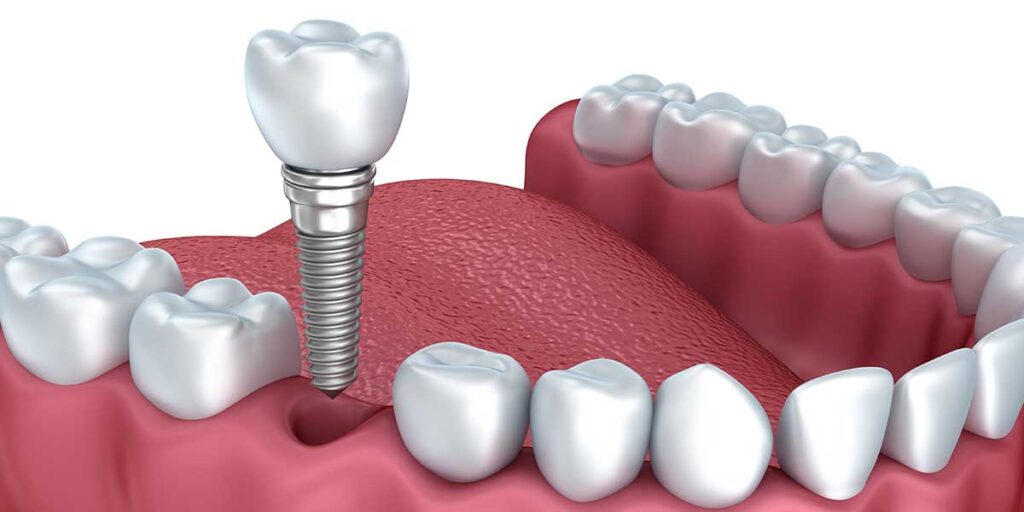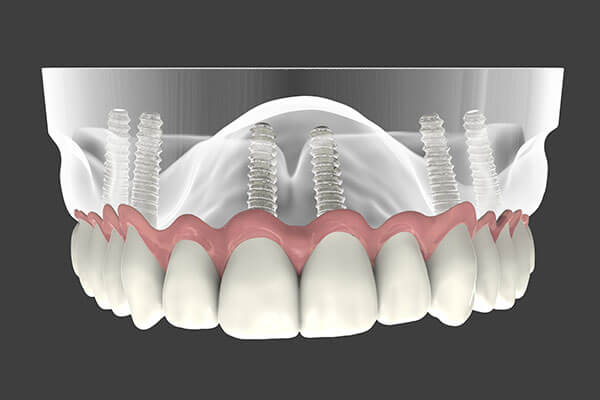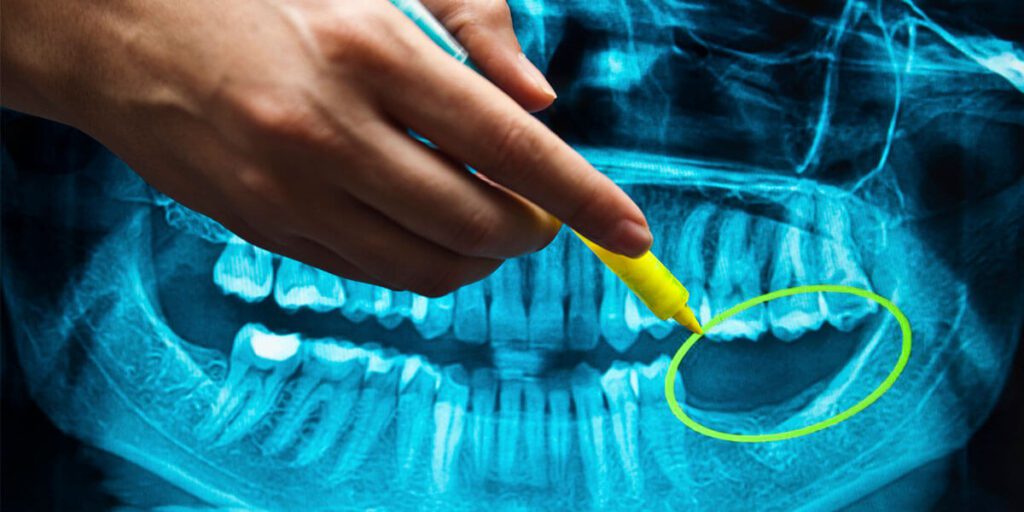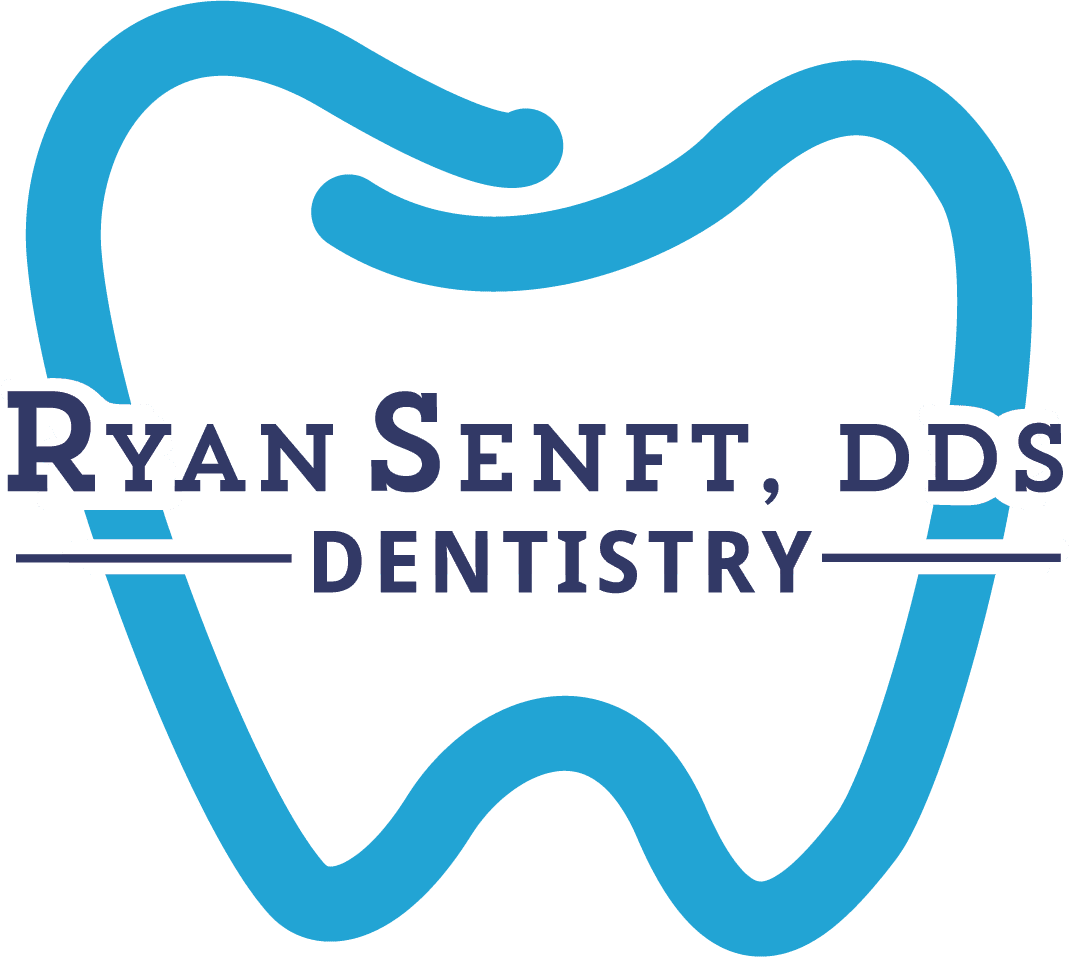Dental Implants in Cupertino, CA
Ryan Senft, DDS provides single and multiple dental implants in Cupertino, CA. Call us to learn more or schedule an appointment.
Guided Implant Placement
With this technique, specialized software is used to create custom surgical guides. These guides direct the exact location, angle, and depth of each implant placement. The use of the guide increases the accuracy, efficiency, safety, and predictability of the procedure.
Using CBCT scans, virtual treatment planning, and highly specialized training, we are able to provide guided implant placement for our patients.

Using a virtual 3D model or a physical model, implant placements and the following restorative work can be simulated to create the ideal patient treatment plan. These virtual plans allow the doctor to take multiple aspects of implant placement and restoration into consideration, resulting in optimal aesthetics, function, and longevity for the patient’s final restoration. Working with a 3D model also allows the patient to better understand the procedures and visualize the end result.
Single Tooth Dental Implants
Dental implants replace tooth roots in the mouth. Implants provide a strong foundation for fixed or removable replacement teeth and can aid in the prevention of bone loss in the jaw.
Implants provide a strong foundation for fixed or removable replacement teeth and help maintain the existing bone.

Dental implants are small anchors made of a biocompatible metal called titanium that are placed in the jawbone. Dental implants are the replacement of tooth roots in the mouth. Once placed, the anchors begin to fuse with the bone over the course of a few months. After the fusing process, known as osseointegration, abutment posts are inserted into the anchors to allow for the permanent attachment of the replacement teeth.
Implant-Supported Bridges
An implant-supported bridge is a restorative solution for spaces where three or more adjacent teeth are missing. This restoration typically requires two implants to support the porcelain bridge. The bridge provides a functional and aesthetic replacement for a patient’s natural teeth.
Because of the natural look and feel of the porcelain and the functional stability provided by the implants, implant-supported bridges are an effective solution to replace multiple missing teeth.

An implant-supported bridge is a dental bridge that is secured to two or more dental implants rather than relying on the adjacent natural teeth for support. When a bridge uses natural teeth for attachment, the teeth must be prepared (shaved down) for crowns. Once the bridge is placed, the natural teeth will be subjected to increased stress that can be damaging – particularly if the existing tooth, roots, or surrounding bone structure are already compromised.
Implant-Supported Dentures

For patients who are missing many or all of their teeth, implant-supported dentures may be an alternative to traditional dentures. This solution requires the placement of two or more implants. In order to replace a full arch denture, a minimum of four implants is generally recommended. Eligibility for this solution is dependent upon a number of factors, with jaw bone density being one of the most significant determining factors.
Traditional dentures rely on an acrylic base that sits directly on the gums, held in place by a paste or adhesive. Using implants as supports for dentures allows for a smaller and more comfortable base and less shifting of the prosthesis during use.
Implants can support both full and partial dentures as well as both fixed and removable dentures. If a removable denture is selected, the denture will “snap” on to the implant rather than requiring the use of denture paste or adhesives.
Implant-supported dentures can be either fixed or removable.
This solution requires the placement of two or more implants. If a removable denture is selected, the denture will “snap” on to the implant rather than requiring the use of denture paste or adhesives. Removable dentures can be taken out for cleaning at night.
This technique offers many advantages over traditional dentures.
Easy to care for, this solution can simulate the look and feel of natural teeth and stay fixed in place with the implants acting as anchors. Patients will not experience the typical rocking and movement or gum irritation associated with dentures.
Dental implant placement can also help alleviate the sunken look that can occur with bone loss in the jaw by stimulating bone growth in the area around the implant. This process is called osseointegration and can also help prevent future bone loss.
The Benefits & Importance of Dental Implants

Implants are the best solution for simulating the look, feel, and function of natural teeth. Dental implants do much more than replace missing teeth. They help maintain and strengthen bone structure, provide the ability to chew healthy food, and give patients the confidence to smile. They also protect existing teeth by helping to preserve bone structure.
Once a tooth is lost, several things begin to happen that are not immediately noticeable to a patient and which can have a significant negative effect on both health and appearance. Tooth roots help hold teeth in place, but they are also critical in maintaining health in the surrounding gums and supporting bone structures. Bone loss in the jawbone is one significant problem that naturally occurs once a tooth is lost. This bone loss can compromise the integrity of neighboring tooth roots and tooth stability, and it is also a large part of what causes the “sunken” look that is seen in people who have lost several or all of their teeth. It is the reason patients who wear dentures find that over time their dentures are harder and harder to fit and keep in place.
Dental implant placement can help generate bone growth in the area around the implant, which not only strengthens the bone and builds support, but can also alleviate the sunken look that can occur with bone loss in the jaw. This process is known as osseointegration and is a significant benefit of implant placement because it can also help prevent future bone loss.
Although having a beautiful smile and the confidence that comes with it are important, there are also important health reasons to have dental implants. Whether replacing one tooth or several, implants are an important solution to restoring and maintaining dental health.
Frequently Asked Questions About Dental Implants
How much do dental implants cost in Cupertino, CA?
The cost of dental implants in Cupertino depends on several factors: the number of teeth being replaced, the type of restoration being used to replace them, the material used to create the restoration, and any additional procedures needed to prepare for dental implant surgery. During your consultation, we will provide you with your options and a cost for each.
Are dental implants covered by insurance?
The total cost of dental implants is rarely covered by dental insurance, but some plans do pay some of the costs—for example, the restorations that attach to your dental implants may be covered, but not the implants themselves. In certain cases, medical insurance may also provide coverage. We’re happy to help you understand your benefits.
Are dental implants worth it?
Yes, dental implants are worth it. They’re the only restoration for missing teeth that prevents and even reverses bone loss in the jaw, resulting in a stronger bite, better oral health, and a more youthful appearance. Dental implants look, feel, and function like natural teeth.
How painful is getting a dental implant?
Getting a dental implant isn’t painful at all because we use local anesthesia to numb the area where we’re working. In the hours after your surgery, you’ll feel some tenderness and discomfort, but this can be relieved with over-the-counter pain medication.
Can dental implants be done in one day?
Some dental implant restorations can be performed in one day, while others need multiple office visits. We’ll let you know if you’re a candidate for a same-day dental implant procedure during your consultation.
Are you put to sleep for dental implants?
Our dental implant procedures are performed with local anesthesia to ensure your comfort, but you will be awake. Mild sedation is available for patients who are anxious or need help relaxing.
